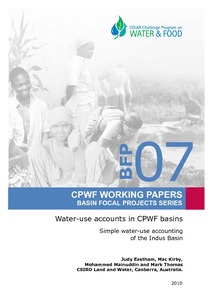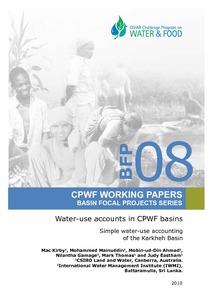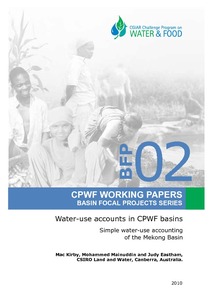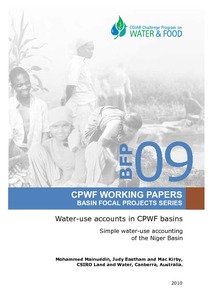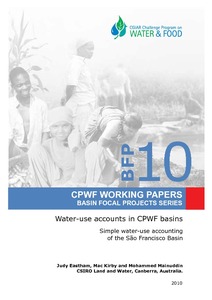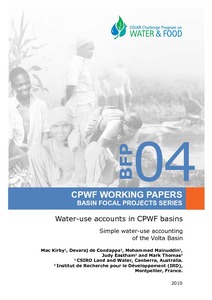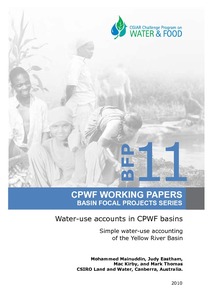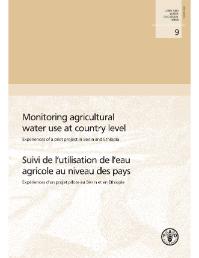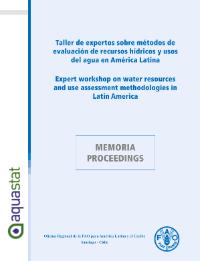Water-use accounts in CPWF basins: Simple water-use accounting of the Indus Basin
This paper applies the principles of water-use accounts, developed in the first of the
series, to the Indus River basin in South Asia. The Indus Basin covers 3 countries, rises
in the Tibetan plateau in the vicinity of Lake Mansarovar in China. Irrigated agriculture
in the Basin is extensive with the construction of dams, barrages, and link canals to
distribute water, with modern engineering to support irrigation starting as early as the
mid 1800s.
Net runoff is about 10% of total precipitation. Irrigated agriculture covers 20% of

